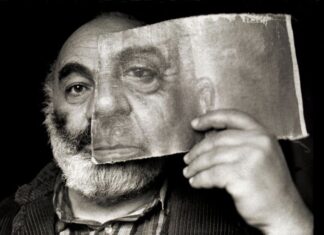 NEW YORK — At first glance, the Armenian Genocide would be an unlikely context for a compelling love story. Yet, one author has proved it cannot only be done, but done extraordinarily well — and is quickly captivating readers across the country. In his latest publication, The Sandcastle Girls (Doubleday), award-winning novelist and grandson of survivors Chris Bohjalian draws inspiration from his own family’s plight, putting their story, and countless others, in the national spotlight. Released just last month, the book has already risen to the top of the New York Times best- sellers list and appeared as a “Book of the Week” on Oprah.com, continuing to gain attention through two book tour stops co-sponsored by AGBU.
NEW YORK — At first glance, the Armenian Genocide would be an unlikely context for a compelling love story. Yet, one author has proved it cannot only be done, but done extraordinarily well — and is quickly captivating readers across the country. In his latest publication, The Sandcastle Girls (Doubleday), award-winning novelist and grandson of survivors Chris Bohjalian draws inspiration from his own family’s plight, putting their story, and countless others, in the national spotlight. Released just last month, the book has already risen to the top of the New York Times best- sellers list and appeared as a “Book of the Week” on Oprah.com, continuing to gain attention through two book tour stops co-sponsored by AGBU.
On the evening of Friday, August 3, Bohjalian drew a crowd of more than 200 guests to the Academy Theater at Lighthouse International for a book presentation and signing. The event was presented by the Armenian National Committee (ANC) — New York and Doubleday Publishing, hosted by the Armenian General Benevolent Union (AGBU) Ararat and co-sponsored by the Armenian General Benevolent Union (AGBU) Young Professionals of Greater New York (YPGNY), the Armenia Network, New York Region, Armenian Youth Federation-Youth Organization of the Armenian Revolutionary Federation (AYF-YOARF) New York “Hyortik” chapter and Hamazkayin of New York. Hard covers in hand, audience members were first welcomed by AGBU Associate Director of Education Natalie Gabrelian, who spoke on behalf of Ararat, YPGNY and their partners. She then passed the podium to Ani Tchaghlasian from the ANC, who said that no introduction could do Bohjalian adequate justice and that the great suc- cess of The Sandcastle Girls speaks for itself; since debuting as a New York Times bestseller, the novel has also become the top seller at the Harvard Book Store. As Tchaghlasian said, the book “brings the Armenian Genocide to the public, making the stories — as well as the pursuit of justice — tangible and real,” an authenticity that comes from years of Bohjalian researching official records and looking back through his fami- ly history.
Deftly balancing humor with the book’s tragic themes, Bohjalian took the beginning of his presentation to entertain the crowd with funny stories of life on the road during a national book tour. He soon transitioned, though, from those personal anecdotes to tales from his child- hood, recounting memories of weekends spent
in his grandparents’ house, where the walls were lined with Armenian books and the furni- ture covered with intricate Armenian lacework. His father, he explained, entered kindergarten unable to speak a word of English, but like so many in the diaspora’s first generation, rein- vented himself and as an adult joined the most iconic American industry of the time: advertising. It was not until 2009, when his father’s health began to deteriorate and the two spent more and more time together, often looking
through old family photos, that Bohjalian began to put together some pieces of his fami- ly’s puzzle. Directing the audience’s attention to a screen of several black-and-white snap- shots, he pointed to one dating back to the late 19th century in Constantinople, and another of his grandparents and father from 1934, which sat on his desk and inspired him the entire time he wrote The Sandcastle Girls.
As Bohjalian described, the book had been a work in progress for almost his entire life, and in 1993 he wrote a complete manuscript on the Armenian Genocide before deciding it needed to be shelved. Seventeen years later, motivated in part by his father’s death and the desire to carry on his family’s legacy, Bohjalian revisited the idea, for two reasons. The first, he told the crowd, being that the story of the Armenians is so profound and has a direct link with all other genocides unfolding around the world today. And moreover, he said, quoting from the book, because it is “the slaughter we know next to nothing about,” the story that appeared on the front pages of newspapers regularly through the early 20th century before “the news cycle moved on.”








